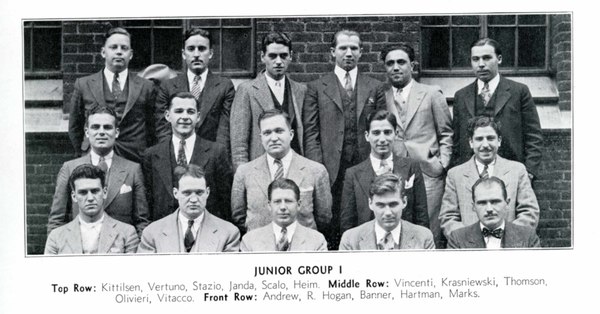Third Year
Late Summer 1931: Perry pays a similar tuition and fees rate as his sophomore year, though he must also pay a $6 clinic fee and $20 obstetric fee for the rotations he will complete. At the Freshman Smoker, Dean Moorhead introduces the inaugural year of the E.L. Moorhead Surgical Seminar--a seminar that invites seniors in high academic standing to discuss medical topics and literature. Moorhead announces the seniors chosen to participate this first year.
Fall 1931: At the start of the school year, Perry finds himself excited at the prospect of being instructed by faculty members familiar with the Loyola institution. In 1931, sixty-four of the instructors at the Loyola School of Medicine were Loyola graduates. Additionally, eighteen of the faculty members had experience as Fellows of the American College of Surgeons.
As a junior, Perry must complete basic clinical rotations at one of the school’s affiliated hospitals. He spends eleven weeks at St. Elizabeth’s Hospital getting both didactic and clinical instruction. Then, Perry spends an additional eleven weeks at the Mercy Clinic, where one of those weeks focuses on obstetrical service. Completion of both the hospital clinic and Mercy dispensary clinics are required for graduation.
On top of spending a few hours each week at a hospital, Perry takes courses in Autopsies, Prescription Writing, Diseases of the Nervous System, Surgical Pathology, Skin Diseases and Syphilis, and Radiology. Perry must also complete a conference course and dispensary course in each of the major departments of the school—Surgery, Orthopedic Surgery, Genito-Urinary Surgery, Opthalmology, Oto-Laryngology, Obstetrics, and Gynecology.
To help with his studies, Perry spends his spare time at the school’s museums. The collections contain anatomical specimens, wax models, and pathological anomalies. As he views the museum collections, Perry learns that Loyola is preparing to display its embryological collection along with anatomical sections and slides at the 1933 Century of Progress World’s Fair.

